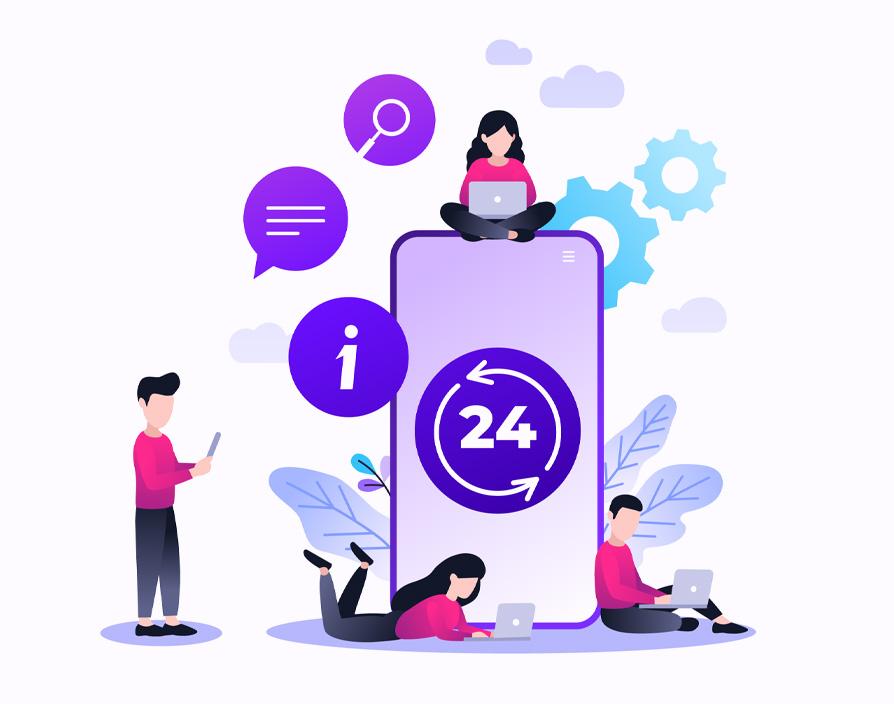Self-service channels are now a strong component of our customer success program. While developing this well-informed and highly integrated framework has entailed both budget and dedicated resources, there are many key learnings we can share that small to medium enterprises (SMEs) can apply in their day-to-day businesses in order to offer their customers optimised self-service channels. Ultimately, these are measures that may help build long-term resilience, helping to decrease customer service costs, reduce customer service employee burnout, and protect the bottom line.
Understand your customers
SMEs may not have an unlimited budget to dedicate to customer research, but one-to-one customer interviews and other feedback sessions can be woven into ongoing customer communications. This will help customer service leaders understand their customers’ identities, pain points, and aspirations within their roles, which is integral to building the right self-service channels, based on the correct business use cases.
Continuous content improvement
All businesses, large or small, need to regularly update and expand their knowledge bases and e-learning documentation to ensure that the information remains accurate and relevant as products or services evolve. This is a great opportunity to solicit feedback from your customers to identify content gaps and areas that need improvement.
Invest in search engine optimisation (SEO)
SMEs may not have entire teams dedicated to SEO, but this can be done by one or two people in your organisation to keep on top of your knowledge base. Using relevant keywords, tags, and metadata should be a dynamic and continuous effort to improve the discoverability of your resources.
Create feedback loops
Feedback loops can be customised to the size and nature of your business. Gather insights through surveys, feedback loops, user testing, and customer behaviour analysis to create a self-service ecosystem that resonates with your audience, and to improve adoption rates and long-term loyalty.
Ensure mobile-friendly design
Ensure that your self-service support channels are designed to be mobile-friendly since many customers prefer accessing support on their smartphones or tablets.
Strategic community management
Community management may sound like a time-consuming exercise for resource-limited SMEs, but ultimately, hosting strategic forums where customers can interact with each other and share experiences related to your products or services is likely to reduce time while saving costs. It can also foster transparency and build trust and a great sense of community among users.
User-generated content
Advanced community management also encourages customers to share their own solutions and experiences through user-generated and contributed content. User-generated content can provide unique perspectives and solutions that may not be covered in formal documentation, such as the nuances of how to use products and services in unique situations or circumstances. Users may also share more advanced use cases for functionality, ultimately encouraging more power users in the community.
Data analysis and content gap measurement
Again, data analysis may sound time-consuming, but it can encourage better first-time resolution rates, which will give time back to your customer service team. By analysing how customers use your support content and measuring the “content gap,” you can determine the percentage of searches that don’t return the desired content. You can then move on to minimise this gap through careful analysis and content optimisation.
Live chat best practices
If you use live chat as a customer support tool, consider analysing your practices to see if there is room for improvement. Are your agents responding quickly, and personalising interactions by using the customer’s name, guiding customers through your site, and ensuring satisfaction before ending the chat? Live chat should introduce efficiencies to the business rather than adding to resolution time.
Multimedia content
Diversify your content formats by incorporating videos, infographics, and step-by-step visual guides. Different customers have varying learning preferences, and multimedia content can cater to a broader audience and encourage better overall customer satisfaction.
Smarter Self-Service for SMEs
While technology plays a crucial role in self-service customer support, understanding your customer’s needs and preferences is paramount for success. Beyond this, remember that self-service is not just about cutting back call volume – it’s about delivering better, smarter service that is more tailored to the individual. By continuously improving your content, optimising for search, and engaging with customers through various channels, you can enhance your self-service digital support capabilities and provide a better experience for your customers. Simultaneously, you can free your customer service employees to focus on solving the issues that require a human touch.
Share via:









































